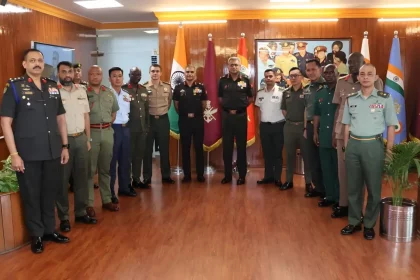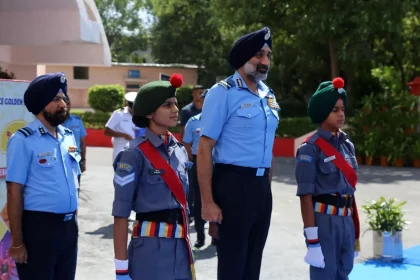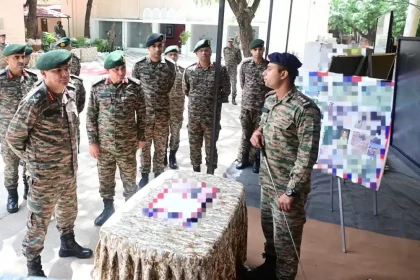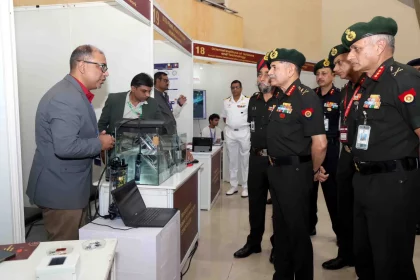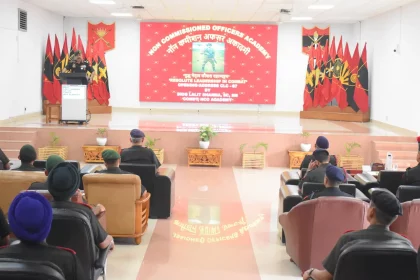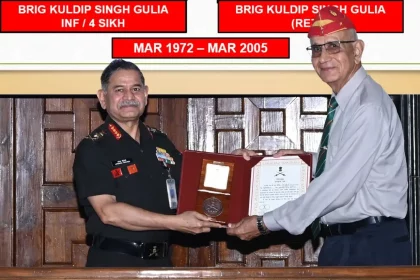Lt Gen Anindya Sengupta Visits CDM to Engage with Future Military Leaders
Lt Gen Sengupta Engages HDMC Participants on Future Military Leadership and Operational Foresight.
Air Force Golden Jubilee Institute Marks 40th Raising Day with Celebrations of Diversity
AFGJI Celebrates 40 Years of Inclusive Education and Student Excellence.
Lt Gen AVS Rathee Reviews Operational Preparedness of Bogra Brigade
GOC Konark Corps Commends Bogra Brigade’s Tech-Driven Mechanised Operations.
COAS Highlights Academia-Military Synergy at T-SATS to Drive Defence Innovation
General Upendra Dwivedi Stresses Tech Clusters, Incubation Cells, and Start-Up Collaboration at T-SATS.
Combat Leadership Course Commences at NCO Academy, Dhana
NCO Academy, Dhana Launches Six-Week Training to Sharpen Leadership Skills and Battlefield Adaptability.
COAS Honours Veterans with ‘Veteran Achievers Award’ at Retiring Officers Seminar
Army Honours Veterans for Service Beyond the Uniform.

